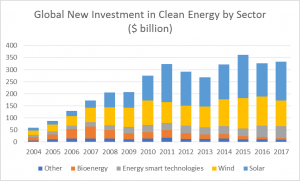AUSTRALIA
‘Reliable Coal’ breaks again – and has to be saved by renewables and storage
In another heatwave last week – with temperatures reaching 40C+ the 1100MW Loy Yang B coal generator in Victoria tripped, losing 530MW of capacity and sending prices in the energy market to $12,900MWh in Victoria and $14,200MWh in South Australia. This is the thirteenth time a coal generator has failed this summer causing commentators to question whether they can be relied upon for peak generation.
The good news for both industrial storage and domestic solar and storage is that they were able to step in to fill the breach. Reposit Power Virtual Power Plant customers earnt between $5-$50 over the peak price period, and the SA big battery fed 30MW into the grid, which helped to avoid a load shedding event.
Large scale energy users go green
Following on from the Nectar Farm private agreement with the Bungala Green Power Hub, a second large energy user has signed a private power purchase agreement (PPA) with a renewable energy generator. The University of New South Wales (UNSW) has signed a 15 year PPA with Moaneng Australia and Origin Energy to purchase 124,000MWh of solar generation per year to cover the UNSW annual electricity demand – helping the university achieve its goal of being carbon neutral by 2020.
USA
Rocky Mountain Institute Report
RMI has released its Reimagining the Utility report and is available for download here. There is also a release blog posted here.
SEIA releases report on locational value of solar
Given recent interest in stacking, this report provides an explanation of value from the perspective of the solar industry.
EUROPE
Energy blockchain in Estonia
Blockchain approaches to energy trading are growing at pace. In Estonia, the blockchain green energy trading company WePower is working with electricity and gas system operator Elering to integrate the approach into its data exchange platform. They are seeking to use this project as a proof of concept that they can then take to other European markets, including Spain, Portugal and Italy.
European Parliament backs net-zero carbon emissions by 2050, but reduces energy efficiency target
The EP unexpectedly backed a proposal from Green MEP Claude Termes last week for the EU to achieve a net-zero carbon economy by 2050, in order to support efforts to limit long term global warming to within 1.5°C and 2°C. The proposal is particularly important because it will involve setting carbon budgets for the EU, which have so far been absent from the bloc’s climate policy. However, the Parliament has also dropped the idea of a 40% efficiency target, which it has been pushing for some time, in favour of a 35% binding goal. This lower goal has been backed by the centre-right EPP group, and the Parliament has now coalesced around it as a compromise position to take into negotiations with the Member State governments.
Record renewables growth but increasing energy consumption result in stable emissions in Germany in 2017.
Although official data on energy consumption is not available until later this year, AEGB a group of energy sector specialists and economists have recently published estimates of energy consumption for 2017. For the second year in a row energy consumption is expected to have increased (by 0.8%) due to economic growth. The use of natural gas also grew by 5.2%. However, despite these increases emissions are expected to stay stable due to record growth in renewable electricity output and reductions in coal use. Renewables grew to 33% of generation (including exports) and accounted for 36.5% of domestic demand, meeting the country’s 2020 target three years early.
Agora Energiewende argue that negative power prices show the right incentives are in place to move to a flexible system.
The head of Agora Energiewende, Patrick Graichen, has argued that the fact that power prices in Germany occasionally turn negative, resulting in power producers paying their customers to use excess electricity, should be a cause for celebration rather than concern. In Die Welt Graichen writes that for some power plants it is cheaper to sell their electricity at a negative price than to shut the plant down and turn it back on again a few hours later. As the penetration of marginal cost renewables increases, negative prices are likely to happen more frequently increasing incentives for operators to invest in flexible plants. Without negative power prices Graichen suggests that further increases in flexible plant, including storage, are less likely to happen. Graichen therefore calls negative prices “the greatest driver of making the energy transition’s power system more flexible”.
WIDER GLOBE
BNEF: Global Clean Energy Investment totals $US 333 billion in 2017
Bloomberg New Energy Finance (BNEF) has published its preliminary analysis for investment in global clean energy which shows that 2017 was the second highest ever, with $US333.5 billion, this is despite falling technology costs. Globally, the solar sector in China dominated, with a total of $132.6 billion of investments – leading to over 50 GW of additional solar capacity. As the figure shows, growth in solar investment has continued at pace over the last decade.

Source: BNEF
In regional terms Asia, largely China, continues to dominate the global landscape, with Europe, once the world leader continuing to decrease the level of investments. In 2017, Europe investment totalled just $57.4 billion, down from $137.8 billion in 2011. While in 2017 in the United States investment in clean energy grew marginally to $56.9 billion, although as with Europe investment peaked in 2011, however in the US at $62.3 billion. Mexico and Australia saw 2017 investment levels at an all – time high of $6.2 billion and $9 billion respectively.
The Ups and Downs of African Renewable Energy Development
The African Development Bank have announced that they achieved ‘100% investment in renewable energy in 2017’. This led to 1.4 GW of additional renewable energy capacity during the year, with plans to accelerate lending in 2018, under the New Deal on Energy for Africa programme. Although renewable energy is still developing relatively slowly in some countries and in South Africa the Wind Energy Association has highlighted in a press release the ongoing delay in Government approval for 26 renewable energy projects, which have been awaiting signoff since 2016.
However, falling renewable technology costs mean that “The cheapest electricity in most of Africa now comes from a solar panel on your roof,” says Xavier Helgesen, CEO of Off Grid Electric. This may mean the need for government support is reduced as “the combination of growing demand for reliable electricity and plummeting costs for solar and batteries has started to spark a distributed-energy revolution in Africa.” Furthermore, the development of crowdfunding is helping to finance small scale renewables across the continent.
Related Posts
« Previous Global Insight 27: 16th January 2018 New Thinking: The RIIO-ED1 Price review – Just how successful is RIIO – update Next »







